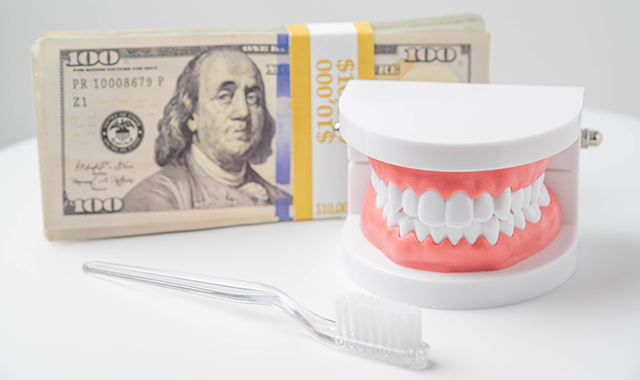Keeping up with the new order of business for SBA loans and coronavirus relief, support
Dentists have been hit hard financially during this COVID-19 crisis, but there are programs available and practices should review the application process as soon as possible.

It seems as if there are changes occurring every day with government clarification and revisions to the PPP (Paycheck Protection Program) and the EIDL ( Economic Injury Disaster Loan and Disaster Grants ) facilities. These provisions fall under the CARES (Coronavirus Aid, Relief, and Economic Security) Act.
The essence of these relief items is that the government seems to want to assist those who are suffering financially with their businesses during the coronavirus pandemic. There are new programs that work with banks and the Small Business Administration (SBA) that may be part of a loan forgiveness package based on criteria that must be met. Banks like to work with borrowers who use SBA loans since the bank receives a guarantee of a percentage of the money lent.
The PPP works with an advance or loan of up to 2.5 times the amount of payroll in a business with the potential for forgiveness if a certain percentage is used exclusively for payroll rather than other expenses. The exclusions from the definition of payroll are important for qualification of the funds and the forgiveness data. Importantly, employment taxes such as FICA, Federal employment taxes and state employment taxes are excluded from the definition of payroll. The payment of the employment taxes can be deferred over three years. Also, individual employee payroll above $100,000 is excluded.
A dental CPA or other financial advisor should be involved in discussions with the dentist to review the guidelines and ramifications for the release of these funds to him or her. Dentists have been hurt badly on a financial basis because of the conditions occurring with this COVID-19 crisis. These programs are available to dental practices and should be reviewed for the application process as soon as possible. It may be surprising to learn that a new possibility is the ability to receive a $10,000 grant (no repayment) almost immediately.
Loans and other advances
There are always certain conditions to be met to comply with these low interest and loan forgiveness programs. Some pertain to the maximum number of employees allowed by the business. Almost all dental practices would be included since the number of employees on the payroll of a business that is excluded is much larger than almost any dental practices pay. It is possible that some of the largest dental service organizations (DSOs) may not be part of the program based on the amount of people they employ.
This program is almost a self-audit or honor system where the application is sent and money should arrive. Testing for accuracy and comes later. The net worth of the business entity and net income levels are also considerations to be addressed and the financial advisor for the dentist is best to consult for assistance. CARES, PPP and EIDL dollar amounts are supposed to be used for small businesses. With most dental practices currently forced to handle only emergency cases during this pandemic, the financial hardships have been severe in many cases. It’s the right time for the dentist to use these programs to his or her own advantage.
Other important parts of the programs to be considered by the dentist
There are so many pieces to the programs that involve the ability of the dentist to join and reap the rewards of the application process and the use of each part to be considered. Retirement plan deferrals of required minimum distribution amounts are now part of the program. This is of utmost importance considering how the stock market has decreased so rapidly since the pandemic arose. For most retirement plans, the required minimum distribution is the amount at December 31 of the preceding year so that the required minimum distribution would be at a much higher amount.
A “qualified individual” can withdraw $100,000 as long as his or her vested interest from a defined contribution plan or an IRA is at that level. The usual 10% penalty is waived. There is still an income tax due on this amount but it can be paid over three years. The availability of the $50,000 loan has been increased to $100,000. There must be a loan provision in the retirement plan and the individual must have a vested interest of at least $100,000 to do so.
Defined benefit plans will have different rules. One change is that minimum funding requirements for 2020 have been extended to January 1, 2021.
For all retirement plan questions, a qualified actuary or dental CPA with retirement plan experience should be consulted.
The ability to use net operating loss carrybacks, long a favorite of those whose income fluctuated greatly, is now available to assist those who have a net operating business loss. These can now be carried back two years. This may happen to the dentist based on his or her ability to use borrowed funds to continue paying bills, thus creating the loss. Certain regulations apply so the advisors to the dentist should be consulted about this.
In summary
These new programs are available and dentists qualify. It is important to start working on the application process as soon as possible. Employing an astute advisor for assistance will pay huge dividends. Don’t be afraid to spend some money on the advisor to make sure that the application is completed and the loan process is begun. It’s key to look into all available opportunities during these difficult times to assist your practices now and to help prepare for what we all hope to be a brighter future.
259 Prospect Plains Rd, Bldg H,
Cranbury, NJ 08512
All rights reserved.